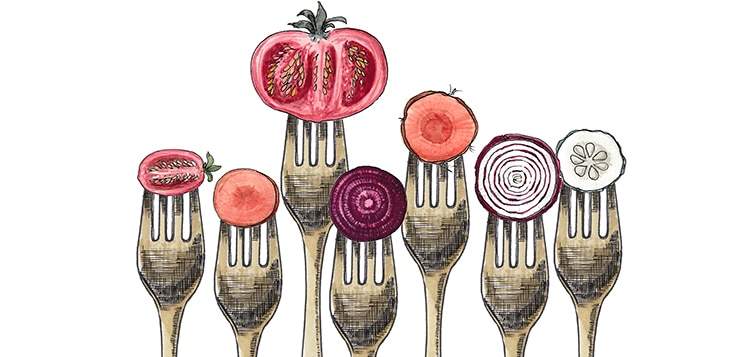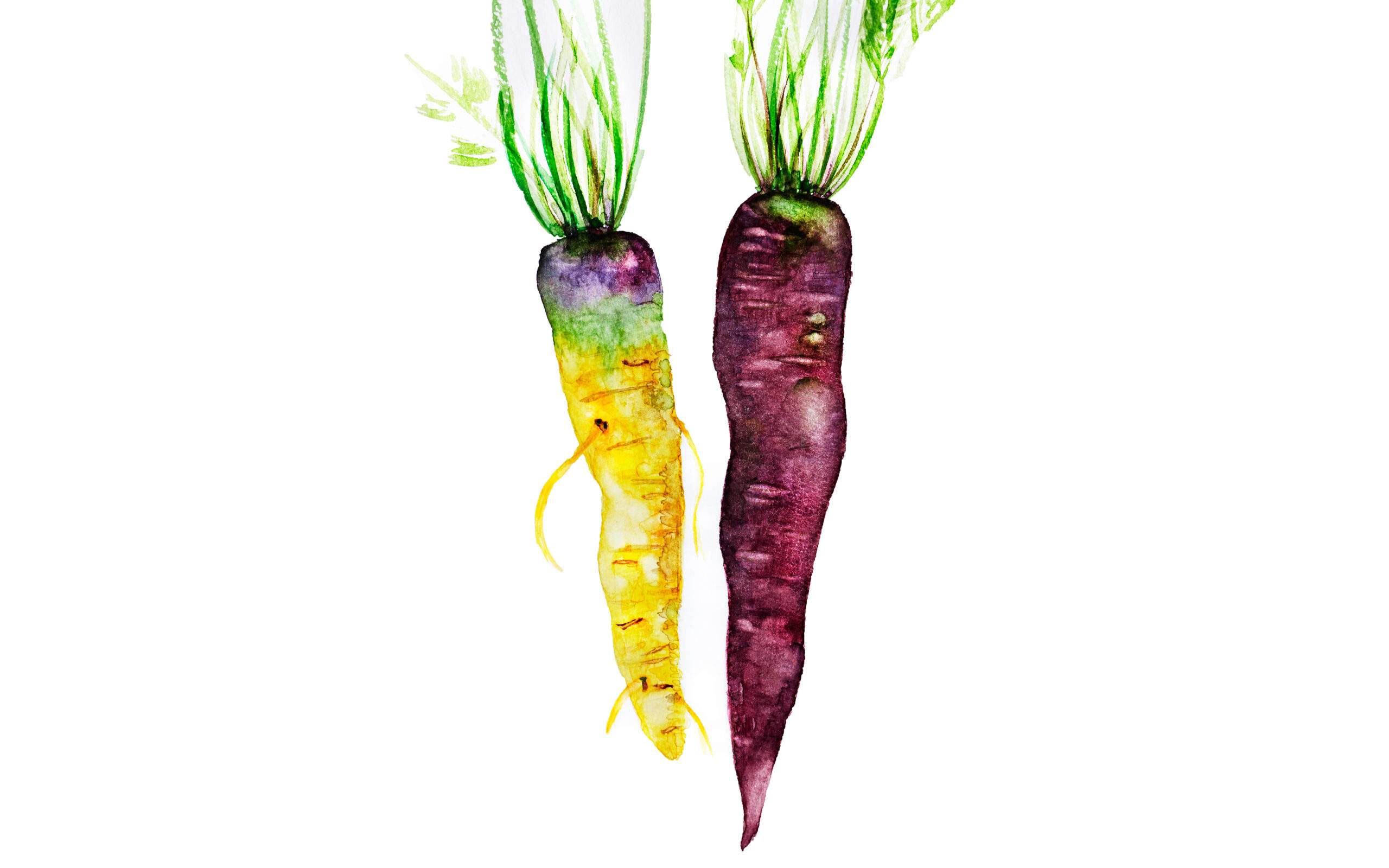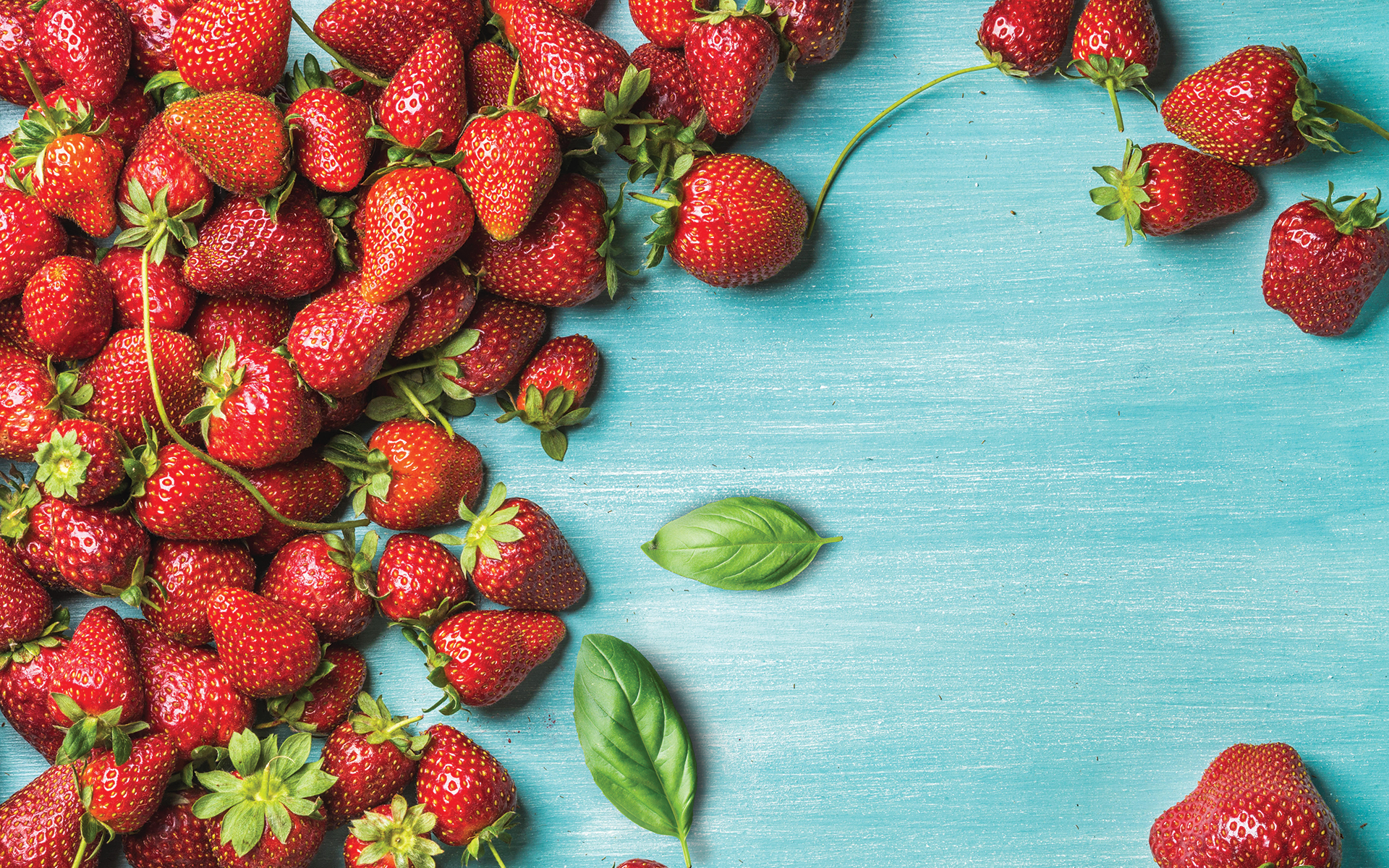Food can be a source of joy and nourishment, self-expression, and sharing. Yet too often, conflicting messages and expectations around food can create feelings like shame, guilt, and anger that affect the way we eat.
When we bring mindful self-compassion to the table, we can start to shift some of those habits, and feel a little less overwhelmed and more embodied in the act of eating.
Explore our guide on how to slow down, savor, and enjoy your meals to the fullest.
The Mindful Kitchen: A Space for Joy and Nourishment
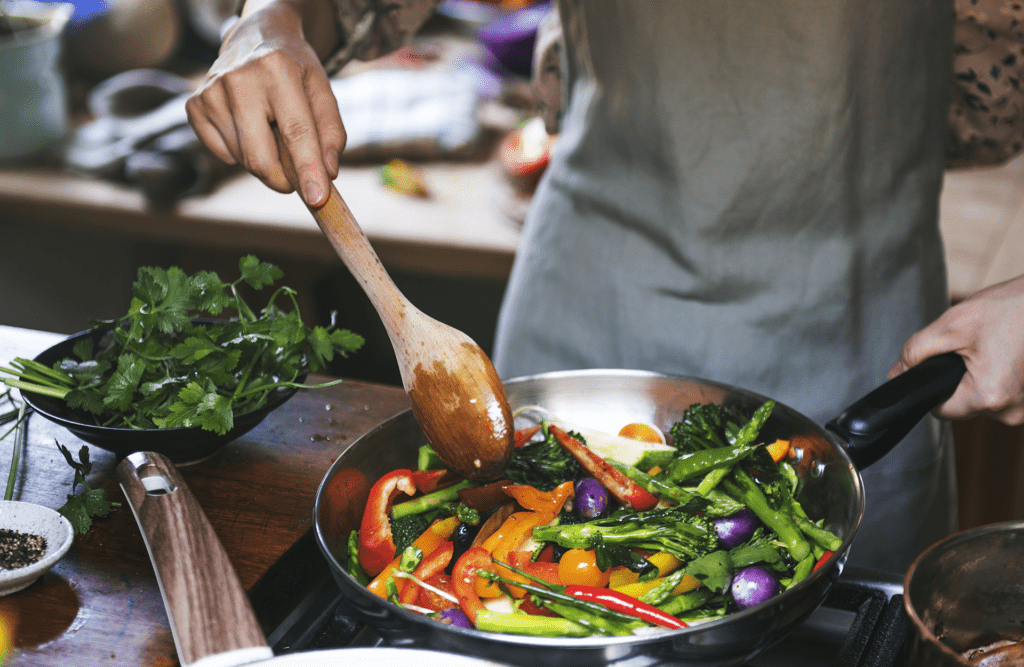
Kitchens are the heart of the home. The place where we gather, enjoy wholesome foods, savor the richness of everyday ingredients and experiences. Kitchens are also a wonderful site to practice mindfulness off of the meditation cushion. By building moments of mindfulness into activities you already do each day, like cooking, you can turn mindfulness into a daily habit. Plus, focusing your awareness on kitchen activities makes it easier to remember the little things—like where you put the missing Tupperware lid, or whether you’re out of milk.
Explore your sense of taste
Taste is a direct sense: You can’t taste the vegetables in your garden from the porch. The veggie has to go into your mouth. Adults generally restrict tasting to the food they eat, but infants will put almost anything in their mouths. Taste is obviously an important tool of learning, one that we have to restrict for the child’s own safety.
The tongue can identify five basic taste groups: sweet, salty, bitter, sour, and savory. Other tastes that we can identify include metallic, watery, and fatty. Because of an intimate connection between smell and taste, when we smell a pie cooking in the oven, we can almost taste it. The texture of food has more to do with the sense of touch on our lips and in our mouths than with our taste buds. So our experience of taste actually combines several senses.
Two Mindful Tasting Exercises
Wake up your taste buds with these two exercises
1. Slowly eat four very different foods, such as a nut, a noodle, a piece of lettuce, and a spoonful of ice cream. Close your eyes, if you like. Try to discriminate the textures as well as the taste. Can you separate the smell from the taste? Or do you have a unified experience of tasting something, combining these senses?
2. With an attitude of mindfulness and appreciation, go to a wine tasting, to an olive oil store, or to a tea or coffee shop. Sample and savor the wine, the olive oil, or the tea. Or host your own mindful tasting party.
Explore your sense of smell
Smell operates across space—you can smell coffee brewing across the room or the smoke from a fire miles away. To produce a smell, a substance must be volatile enough to spray microscopic particles into the air. Molecules travel through the air into our noses, where five million receptor cells reside. They trigger impulses to the brain’s olfactory bulb.
Smells warn us, telling us that something is burning or that our food has gone bad. Smells also delight us, bringing us the scents of each season: newly mown grass in the spring or mulled wine in winter.
Smell can also reach across time, connecting us with the past. As Helen Keller wrote, “Smell is a potent wizard that transports you across thousands of miles and all the years you have lived.” The nose transmits information about smells via the thalamus to regions of the brain involved in learning and memory, which may explain why odors are so evocative of former events.
A short mindful scent practice
Put a small amount of various loose teas in glasses or small bowls. Close your eyes and smell each sample. You can do this with other foods and drink. Try wine or single-malt scotch. Or some herbs and spices.
The Art of Gathering

Purposeful get-togethers and nights of conversation between friends can cement our relationships, start movements, and shape our memories for years. Here’s are four tips for pulling off a meaningful gathering.
1. Ask Yourself: Why Are you Gathering?
By having a clearly identified purpose for the event, participants will have more chances to actually connect, and not be disappointed.
2. Don’t Be a “Chill” Host
People like when the host is present and engaged. Keeping a friendly, but firm attitude makes it less likely an overbearing guest will take control of the gathering. Make many introductions between strangers early in the night – with links to common interests, and lots of compliments.
3. Pre-Game Your Event
If you want to spark creativity at your gathering, perhaps your pregame might include sending your guests an article about how to unleash their imaginations. The pregame doesn’t have to be extravagant—it can be as simple as an email that sets the tone—but it’s an essential piece of planning for an authentic gathering.
4. Embrace the Ending
There’s nothing worse than an event that feels never-ending. Connect one last time, giving guests a chance to reflect on the event, and wind down slowly. Transition back to the real world, by making a statement at the end of the event that connects to themes from the beginning, signaling it’s time to say goodbye.
An Introduction to Mindful Eating
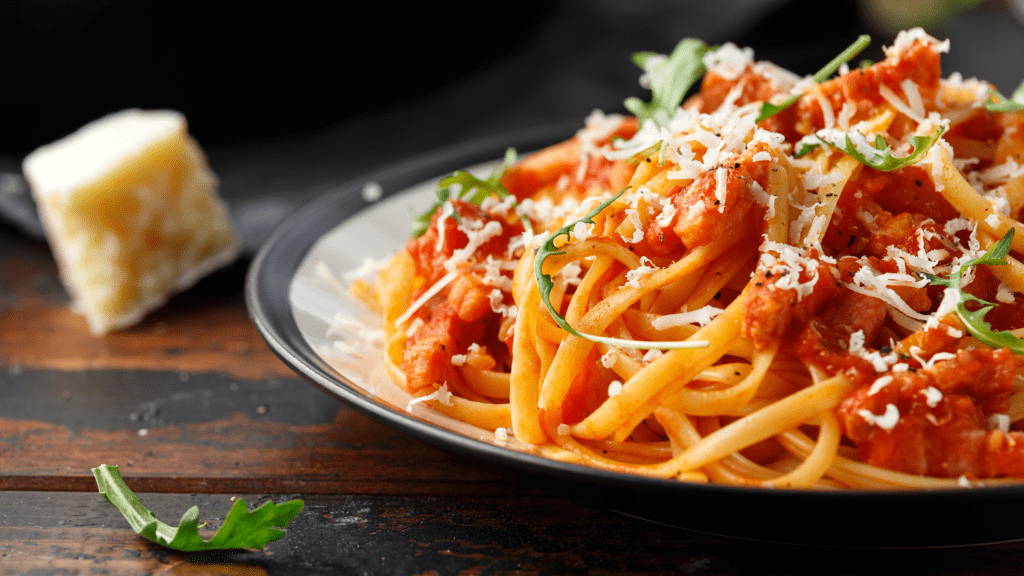
A good meal can have a profound effect on our mood (there’s a reason “hangry” is a thing), and mindful eating can further enhance these benefits by helping us notice the taste, quality and overall experience of our favourite foods.
Here are six ways to boost your awareness with mindful eating:
1) Let your body catch up to your brain
Slowing down is one of the best ways we can get our mind and body to communicate what we really need for nutrition. The body actually sends its satiation signal about 20 minutes after the brain, which is why we often unconsciously overeat. But, if we slow down, you can give your body a chance to catch up to your brain and hear the signals to eat the right amount. Simple ways to slow down might just include follow many of your grandmother’s manners, like sitting down to eat, chewing each bite 25 times (or more), setting your fork down between bites, and all those old manners that are maybe not as pointless as they seemed. What are some ways you can slow down eating and listen more deeply to your body’s signals
2) Know your body’s personal hunger signals
Often we listen first to our minds, but like many mindfulness practices, we might discover more wisdom by tuning into our bodies first. Rather than just eating when we get emotional signals, which may be different for each of us, be they stress, sadness, frustration, loneliness or even just boredom, we can listen to our bodies. Is your stomach growling, energy low, or feeling a little lightheaded? Too often, we eat when our mind tells us to, rather than our bodies. True mindful eating is actually listening deeply to our body’s signals for hunger. Ask yourself: What are your body’s hunger signals, and what are your emotional hunger triggers?
3) Cultivate a mindful kitchen
Having a mindful kitchen means organizing and caring for your kitchen space so it encourages healthy eating and nourishing gatherings. Consider what you bring into your kitchen and where you put things away. Are healthy foods handy? What kinds of foods are in sight? When food is around, we eat it. You don’t have to plan your foodscape down to the last inch or bite, its important to be flexible especially at special occasions, but just be aware of the fact that you might be changing your eating habits at different times of year or for different occasions.
4) Understand your motivations
This is another tricky balance, and ideally we can find nourishing foods that are also satisfying and comforting. But think back to that first mindful raisin. Did that seem appealing before you tried it? There are many reasons that the raisin eating it is such a powerful exercise, but one is that when we slow down and eat healthy foods like raisins, we often enjoy them more than the story we tell ourselves about healthy foods. As we practice eating healthier and a greater variety foods, we are less inclined to binge on our comfort foods, and more inclined to enjoy healthy foods, ultimately finding many foods mentally and physically satisfying as opposed to just a few.
5) Connect more deeply with your food
Unless you are a hunter-gatherer or sustenance farmer, we have all become ever more disconnected from our food in recent years. Many of us don’t even consider where a meal comes from beyond the supermarket packaging. This is a loss, because eating offers an incredible opportunity to connect us more deeply to the natural world, the elements and to each other. When we pause to consider all of the people involved in the meal that has arrived on your plate, from the loved ones (and yourself) who prepared it, to those who stocked the shelves, to those who planted and harvested the raw ingredients, to those who supported them, it is hard to not feel both grateful and interconnected.
6) Attend to your plate
Multitasking and eating is a recipe for not being able to listen deeply to our body’s needs and wants. We’ve all had the experience of going to the movies with our bag full of popcorn, and before the coming attractions are over, we are asking who ate all of our popcorn. When we are distracted, it becomes harder to listen to our body’s signals about food and other needs. With your next meal, try single-tasking and just eating, with no screens or distractions besides enjoying the company you are sharing a meal and conversation with.
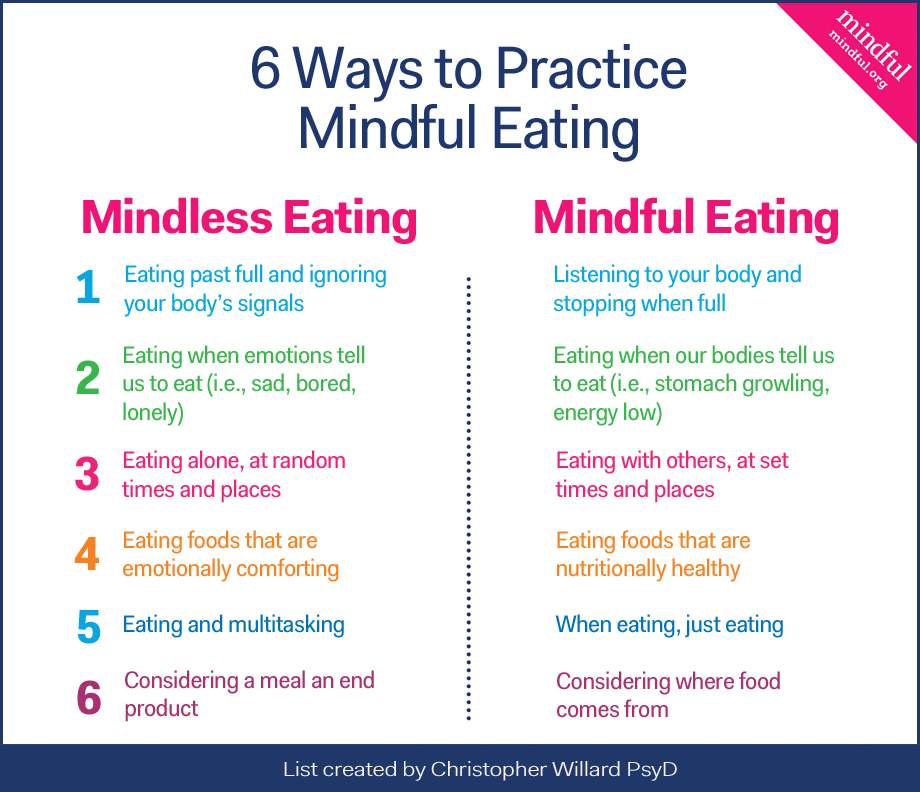
more on mindful eating
Want to Eat Mindfully? Here are the BASICS
Looking to bring mindfulness to the dinner table? Lynn Rossy shares six steps to prime your mind for savoring your next bite—whether it’s chicken nuggets or kale.
Read More
Four Ways to Nourish Happiness with Mindful Eating
When we tap into feelings of joy and happiness in good moments — like savoring delicious food — it helps us build resilience and emotional strength during challenging times.
Read More
Try It Yourself: 11 Ways to Savor

If you tend to eat on the go, out of boredom or because you’re too busy to leave your desk, you’re probably missing out on the joy of savoring.
What does it mean to savor? When we savor, we notice how our food tastes, looks and smells, and the impact it has on our bodies. Not only does it keep us full for longer, it also helps us get more enjoyment from what we eat.
Explore these eleven ways to get the most out of your meal:
1. Eat Slightly Slower
With the speed at which we do most things today, eating can easily become just another thing to cross off your to-do list. The next time you eat, try slowing down—you’ll pull more enjoyment out of your food, feel more satisfied, and your digestive system will thank you.
2. Honor the Elements
Every piece of food we eat has its own rich origin story, which we usually don’t think about. Next time you sit down for a meal, take a moment to acknowledge everything that went into the food on your plate. Consider the people who made it, bought the ingredients, stocked the store shelves, delivered it, harvested it, and all the natural elements of sun, rain, soil, and wind that allowed it to grow.
3. Cook with Love
Even if you’re just making a sandwich, food tastes a lot better when we put a little love into it. Pay attention to the preparation of your food, think about who’s going to eat it, and say in your mind, “May this food help you be strong, healthy, and happy.”
4. Take a Trip
Abraham Joshua Heschel said, “Life is routine and routine is resistance to wonder.” Break from routine, try ethnic foods from different regions of the world and imagine, even if just for a moment, that the food is transporting you there for a mini vacation in your mind.
5. Try Something New
Novelty is the spice of life (and a source of healthy neuroplasticity), so be adventurous and reach outside of your comfort zone. Be bold. Push yourself to try something you never thought you’d like—you never know, you just might be pleasantly surprised!
6.Start from Scratch
Most of us eat the same foods week to week for convenience and taste. And that’s okay. See if you can approach a familiar food with a sense of curiosity: Imagine it’s the first time you’ve ever eaten this food; what new sensations or flavors do you notice?
7. Eat Local, Be Respectful
Fruits and vegetables don’t grow at the grocery store. Get to know where your food comes from by visiting a local farm (or at least a farmers market)—not only will you feel more connected to what you eat, but as a rule food tastes better when it’s fresher. For those of us who eat meat, it can be tricky to figure out where the meat came from and how the animal was treated. Whenever possible, buy from companies you know treat animals respectfully.
8. Use Your Nose (and any other senses that apply)
Our sense of smell has a lot to do with how food tastes. Before eating, pause for a moment to take in the aroma of the food. What scents can you pick up? Does a memory emerge? Take a second look, what colors do you see? Then take a bite and see how much richer the experience can be.
9. Just Eat
When we eat we are often “doing” something else at the same time (working, looking at a device, talking with someone, reading, etc.), which takes away from tasting and fully enjoying the food. See if you can, for at least one meal or snack this week, just eat.
10. Have a Communal Meal
Since the dawn of time people have made it a point to “break bread” together. Invite people over for a special dinner, have a potluck, or go out to a restaurant. Feel the connection grow.
11. Surf Your Urges
We have all been prone to want something that isn’t good for us—for many of us it happens more often than we’d like to admit. Try an experiment: Next time you are craving something you know isn’t healthy for you, set a timer for 20 minutes and then check back in to see if you still want it. That space can often invoke perspective that will help you make a more mindful decision.
savor Your Food Mindfully
Rethink Your Food Cravings with the Art of Savoring
Emotional eating fulfills a real need in our bodies, but goes off kilter when we don’t check in with our minds. Strike a balance between momentary cravings and long-term nourishment with these four steps.
Read More
How to Be Mindful With a Cup of Tea
When it’s difficult to meditate, you can build moments of mindfulness into the day through simple activities like brewing and enjoying a cup of tea.
Read More
Three Mindful Recipes to Savor
Avocado Toast

With a fork, mash an avocado until you get it to a fairly smooth consistency. Take a taste on its own, then throw in a pinch of salt and notice how it affects the flavor. Next, add a squeeze of lemon juice and take another taste. What does the acidity add or alter? Does it affect how the avocado feels on your tongue? Savor this marriage of buttery and tangy on its own or follow the popular trend and spread it on a piece of toast.
Shaved Asparagus Salad

Savor asparagus with a simple salad of raw, thinly shaved spears. Grab a bunch of the thicker spears (go with green or purple, not white) and run a vegetable peeler down the length of each to create ribbons. Toss with the juice of half a lemon and a glug of olive oil. Sprinkle with salt and pepper. If you’re feeling fancy, toss in some shaved or grated Parmesan cheese.
Horseradish Dip

Mix one part lemon juice, two pats freshly grated horseradish and three parts creme fraiche or sour cream. Add salt and pepper to taste. Refrigerate, covered, for half an hour. Enjoy as a dip with veggie, spread on a cracked, dolloped over a baked potato. As you eat, notice how it feels on your tongue and in your nostrils. Dos the sensation change over time? Where do you feel it first, and where does it linger? How does the warmth move through your body?
Explore more mindful recipes
The Mindful Kitchen: How to Be Mindful When Opening a Pomegranate
Opening a pomegranate can seem a messy and meticulous task, but it can also be a beautiful and fun experience to savor. Bring some festive color into your life with this simple technique.
Read More
The Mindful Kitchen: A Lively Bunch
Springtime yields incredible carrots: small, sweet, served up at farmers markets with bushy tops still intact. Try this mindful recipe and savor the bounty.
Read More





